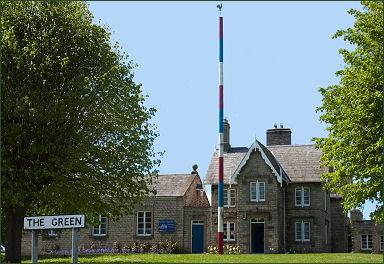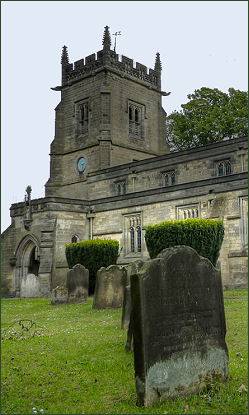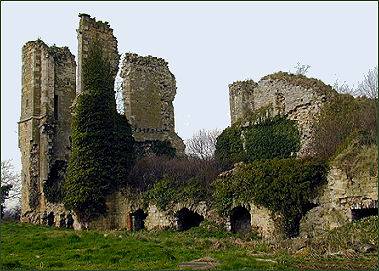Slingsby
OS grid reference:- SE 697 745
 The village of Slingsby is situated around 6 miles (10 km) to the west of Malton and about 2 miles to the north of Castle Howard. The village lies at the foot of gently sloping land which forms the northern edge of the Howardian Hills.
The village of Slingsby is situated around 6 miles (10 km) to the west of Malton and about 2 miles to the north of Castle Howard. The village lies at the foot of gently sloping land which forms the northern edge of the Howardian Hills.
 An ancient settlement, the village is referred to in the Domesday Book of 1086 as "Selungesbi" in the "Maneshou hundred". It then formed part of the Hovingham manor, but some of the land was under the ownership of Orm, son of Gamul at the time of the Norman conquest. Afterwards land around the manor were split between Hugh, son of Baldric and Count Robert of Mortain, half brother of William the Conqueror.
An ancient settlement, the village is referred to in the Domesday Book of 1086 as "Selungesbi" in the "Maneshou hundred". It then formed part of the Hovingham manor, but some of the land was under the ownership of Orm, son of Gamul at the time of the Norman conquest. Afterwards land around the manor were split between Hugh, son of Baldric and Count Robert of Mortain, half brother of William the Conqueror.
The manor later passed to the de Mowbray family, until in 1322, when John de Mowbray, 2nd Baron Mowbray was beheaded for joining Thomas, Earl of Lancaster in revolt against King Edward II. The Wyville family held land under the Mowbray's. The Hastings family possessed the manor until 1600 when it was purchased by Sir Charles Cavendish whose family held it for the next hundred years until they sold to the Duke of Buckingham. In 1751 the manor was sold to the fourth Earl of Carlisle, whose family hold the title to this day.
A maypole stands on the village green, giving a focal point for May celebrations and a reminder of the village's history and traditions. The green is surrounded by pretty stone cottages and Georgian houses. Slingsby High Street has a restaurant, general store, bakery, tea shop, garage, electrical goods shop. The village pub, the Grapes, serves good home made food and a choice of local ales.
The village church, located at the western side of the village, is dedicated to All Saints. The first church known to occupy the site was built in 1157, which waa replaced in the fifteenth century. Much of the present building is the result of a Victorian restoration paid for by Admiral Edward Howard. It is mainly fifteenth century in style with Victorian modifications.The effigy of a knight dates back to the thirteenth century. The knight's shield bears the arms of the Wyvillle family. former Lords of the Manor. The nave contains an Italian corona which was brought from Sledmere House. The tomb of Thomas Snowball, is the work of Robert Thompson 'the Mouseman of Kilburn' and bears his trademark carved mouse. All Saints Church is a Grade II listed building.
 The Methodist Chapel was constructed in 1837 adjacent to the village green and is a Grade II listed building. The founder of Methodism, John Wesley, preached at Slingsby in 1757.
The Methodist Chapel was constructed in 1837 adjacent to the village green and is a Grade II listed building. The founder of Methodism, John Wesley, preached at Slingsby in 1757.
Slingsby Castle (pictured left) is in actually a Jacobean mansion or manor house which stands beside the village church. The de Mowbray family built a castle in the village, which fell into disrepair and was replaced by Ralph de Hastings in 1345. In 1474, a licence was issued to William, Lord Hastings to build, enclose and crenellate the castle or manor.
This structure was removed and rebuilt around 1630-1640 by Sir Charles Cavendish, the grandson of the famous Bess of Hardwick. It was probably designed by John Smythson. The remains can still be seen today just off the village High Street.
The building had two main storeys and a huge vaulted basement. The remains of a moat survive as earthworks
The manor house is believed to never have been inhabited and was never completed. Sir Charles Cavendish, having chosen to fight for the royalists during the Civil War, Sir Charles, along with his brother the Duke of Newcastle, was forced to flee to the continent in 1644.
The ruins are now in the care of English Heritage.
